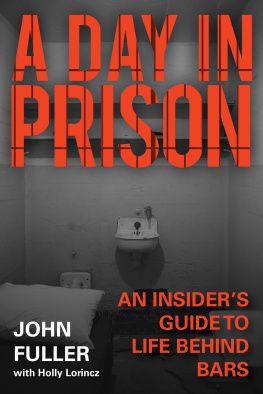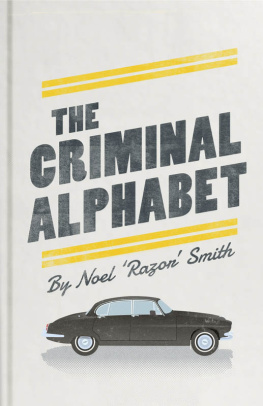VIKING
An imprint of Penguin Random House LLC
penguinrandomhouse.com
Copyright 2022 by Daniel Genis
Penguin supports copyright. Copyright fuels creativity, encourages diverse voices, promotes free speech, and creates a vibrant culture. Thank you for buying an authorized edition of this book and for complying with copyright laws by not reproducing, scanning, or distributing any part of it in any form without permission. You are supporting writers and allowing Penguin to continue to publish books for every reader.
Library of Congress Cataloging-in-Publication Data
Names: Genis, Daniel, 1978 author.
Title: Sentence : ten years and a thousand books in prison / Daniel Genis.
Description: [New York, New York] : Viking, [2022]
Identifiers: LCCN 2021017315 (print) | LCCN 2021017316 (ebook) |
ISBN 9780525429555 (hardcover) | ISBN 9780698405769 (ebook)
Subjects: LCSH: Genis, Daniel, 1978Imprisonment. | Genis, Daniel,
1978Books and reading. | PrisonersNew York (State)Biography. |
Drug addictsNew York (State)Biography. | Drug abuse and crime
New York (State)
Classification: LCC HV9468.G46 A3 2022 (print) | LCC HV9468.G46 (ebook) |
DDC 365/.6092 [B]dc23
LC record available at https://lccn.loc.gov/2021017315
LC ebook record available at https://lccn.loc.gov/2021017316
Designed by Cassandra Garruzzo, adapted for ebook by Estelle Malmed
Cover design: Jack Smyth
Cover images: (hands holding book) Tuan Tran / Getty Images; (clouds) Shutterstock
Author photograph Petra Szabo
pid_prh_6.0_139304738_c0_r0
Dedicated to Petra Szabo,
for waiting for me
& dedicated to the prisoners of New York State, for teaching me
CONTENTS
1.
GUILTY: AN INTRODUCTION
In the beginning was the word. That word was guilty. Upon my pleading so in open court, my existence for the next ten years was locked onto a narrow path winding through a part of America unknown to most... except for those who know it most intimately. When I became a convict, I joined the latter. However, the Incarcerated Nation is taken for granted by the select few who typically and sadly make a lifetime out of walking back and forth on that path. Ive written this account of my journey behind the wall, a trip on which I saw many arcane and unusual things. Some were frankly atrocious, while others were strangely noble and life-affirming.
My own arrival there was fairly humdrum, as far as violent felonies go. All the armed robberies to which I pled guilty were committed during one bad week in August 2003. The heroin habit that drove me to crime was about nine months old by then and my second rodeo. I had managed to stay clean a year after the first, having become addicted at the age of twenty-two, sober a year later, and then back again. The scale of my relapse was increased by a credit card; some idiot issued me five grand of credit even though I was an unemployed drug addict. I spent all of it in the form of cash advances that went right to my dealer. The crime spree began when the credit limit was reached. Visa said I was done, but the opiate receptors in my brain still expected the bundle of heroin they had grown used to getting intravenously.
I had no way of coming up with a hundred dollars a day, and the withdrawal got very bad very quickly. Sick as a dog and desperately wandering downtown, I worked up the courage to show someone the same pocketknife I had once camped with and announced that this was a robbery. When my victim turned over the money, I apologized profusely. I repeated this pattern with varying degrees of success. When told no, I fled. Once, I had a pizza thrown at me. It was stressful and humiliating, no different from the awful things I had read about junkies doing in the many memoirs of addiction I swallowed up at the time. After a week of this and less than a thousand dollars stolen, I had an epiphany: the risks I took for small rewards, and the large compromises made with my own morality, were ludicrous. I threw my folding knife away and never held anyone up again.
The detectives who eventually caught me originally thought the sudden end of this pattern crime spree had been the result either of my arrest for some other misdeeds or of my death. They had apparently combed through the admissions to Rikers Island and the morgue dating from the afternoon when I realized I shouldnt be doing this. My crimes had been reported in the slow summer press as the work of the Apologetic Bandit, due to the contrition I mewled at my victims at the crime scenes, but without an arrest the story did not make much of a splash. On the November day I was finally arrested, so was Michael Jackson, which left no room in the papers to report on my capture. Catching me was no great feat of detection. I had stopped my need to commit crimes by going to detox for heroin addiction and then stabilized myself with methadone, until I relapsed and returned to the very block I had mildly terrorized, because thats where the dope was sold. The day I returned to the scene of my crimes I was recognized by one of my victims. The woman I had robbed in August followed me and called the cops. She waited outside Barnes & Noble while the police were on their way, to make sure I did not slip away. I had been reading Luc Santes Low Life in the store after taking a fix in the bathroom and then stole it to finish at home. This was the first of many resonances between my fiction and my facts, as the book was devoted to the very Bowery I was now apprehended on to the tune of On the ground, motherfucker! When I was searched, empty heroin bags were discovered in my briefcase; Low Life was abandoned as unworthy of evidence. Books and drugs, the two entities that determined so much of my existence, were both present when and where I had my last breath of free air for over a decade.
Low Life was exactly the type of book that had led me to this juncture. My love of obscure tales, printed artifacts from a city devoted to words, and the seamier side of the past primed me to become a bookish New York junkie with my head in the opium clouds of the nineteenth century. Sometimes my interests resounded. Years later I found a bilingual edition of Dadaist poetry with Luc Santes handwritten name in it; he had donated the volume to the prison I was in, and no one else had yet picked up the French text. Herbert Asburys Gangs of New York had influenced Sante to write about hop joints and blind tigers but had also inspired me to emulate the archaic antisocial characters it described. Villainy in sepia attracted me. I relished the idea that I was copping dope on the same blocks that William Burroughs had when he lived in his Bowery bunker; I had read Junkie several times by then, more as a users manual than a work of art. Delving deeper, I read the only published collection of Herbert Hunckes mediocre work when the ancient dope fiend was still alive, and I lived for the streetscapes described in biographies of Beat Generation figures because they were my streets, too. Of course, when things got a little too real and I found myself on Rikers Island, I lost my taste for the gritty and retreated into science fiction. On the day of my sentencing, I read William Gibsons Neuromancer twice in a row to avoid contemplating what awaited me.
Being the Apologetic Bandit did nothing to mitigate my sentence in court, despite the smoke blown up my rear by the $25,000 attorney my parents hired or the opinions of the numerous jailhouse lawyers who promised me that they could get me off... for a small fee. Although I was obviously disinclined to commit crimes I would have never thought of without a heroin addiction riding me, I was sentenced quite harshly as a person who should have known better, as the judge put it. Of course I did know better; it may have felt unfair because a different standard was being deployed to deal with me, but its rationale was accurate. For each of the five counts of armed robbery to which I pled guilty, I would serve the mandatory minimum sentence: two yearsa decade in total, twelve if I lost my good time.















